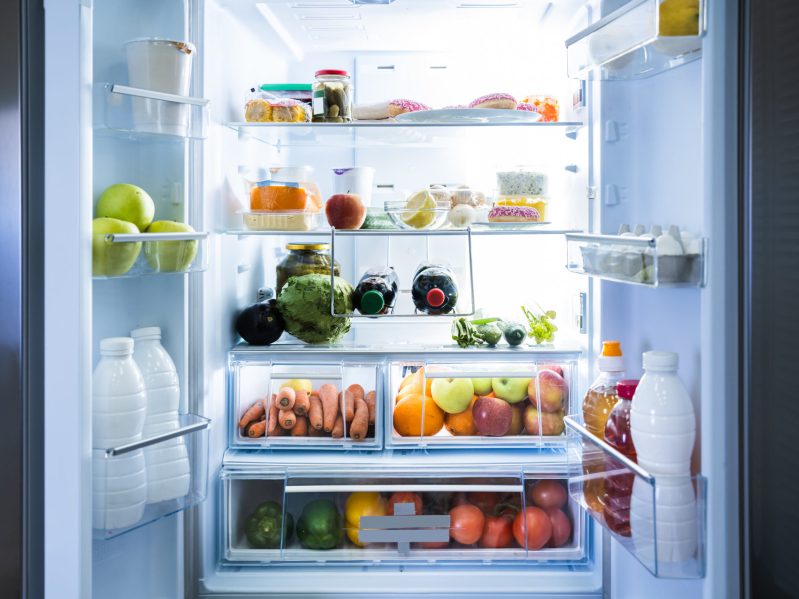Some tasks seem so simple that we don’t even think twice about them. Yet sometimes seemingly innocent behaviors, especially when it comes to things we consume, could have negative consequences. I mean, are you also guilty of re-heating your coffee in the microwave? (Because I am!)
Videos by Suggest
From potentially dangerous mistakes with your slow cooker to need-to-knows about storing your butter on the counter, every part of the process when it comes to storing and cooking food is important. And this notion even applies to how (and where) food is stored in the fridge.
Storing food in the wrong containers, at the wrong temp, or in the wrong spot might result in spoiled food and wasted money, but it could also be detrimental to your health. Here are some of the most common mistakes.
1. Washing Produce Before Storing
It makes sense you’d want to wash your produce as soon as possible. It can be convenient to just grab your veggies or fruit out of the fridge and go, but doing so could potentially lead to sickness.
Excess moisture could lead to bacterial growth which in turn could lead to illness.
Another pro to waiting to rinse? It may help preserve any water-soluble vitamins the produce contains.
2. Setting The Wrong Temperature
It’s important to keep your fridge temperature at 40°F and your freezer at 0°F to keep food out of the “danger zone” (41-135°F). Some experts even say to keep the temperature at 37°F because bacteria can start to grow above 40°F.
Keeping your perishable food at the recommended temperature is important to prevent bacteria from growing, but some reports have shown that built-in refrigerator thermometers can be off by up to five degrees.
An easy (and cheap) solution is simply purchasing a fridge thermometer, like this digital and magnetic option from Vouloir.
3. Using The Wrong Containers
Sorry mom, but storing those leftovers in an old Country Crock container isn’t the best idea as many plastic containers can’t provide an air-tight seal. What’s more, they might contain harmful “forever chemicals” or PFAs.
By far the safest and most eco-friendly containers to use are glass containers. Mason jars can be great for things like berries, while investing in larger containers are perfect for leftovers.
We like this 24-piece set that features airtight lids that even contain a steam release valve.
4. Not Knowing Your Produce Well Enough
You might know there are certain fruits and vegetables that fare better at room temperature. Tomatoes, lemons, and garlic are just a few whose taste and texture can be negatively impacted by cooler temps.
But if you are indiscriminately tossing your weekly grocery haul into the produce drawer, you may be inadvertently storing produce together that can cause one to spoil others quickly. Ethylene-admitting produce, like apples, peppers, and cantaloupe, can impact ethylene-sensitive produce such as asparagus, cucumbers, and lettuce.
While this effect is quicker when stored together at room temperature, it applies to refrigerated veggies and fruit as well.
5. Storing Your Milk In The Refrigerator Door
Your refrigerator door opens and closes several times a day. It’s best to keep any dairy, meat, or other perishable foods or drinks on the shelves of the fridge. (We’ll tell you where in the next section.)
So, what’s okay to store in the fridge door? Condiments, soda, salad dressing, and juice should all be fine in the door.
6. Placing Food On The Wrong Shelf
It actually does matter where you put your food in the fridge. Cooked foods should be reserved for the top shelf of the fridge. The second shelf should store all of your cheeses, eggs, yogurt, and other dairy products. And your bottom shelf should be where the raw food goes—chicken, beef, fish, etc.
The bottom shelf is the coldest, plus you’ll lower your chances of food contamination with raw food on the bottom shelf. The produce drawer should store, you guessed it, your (unwashed) produce.


